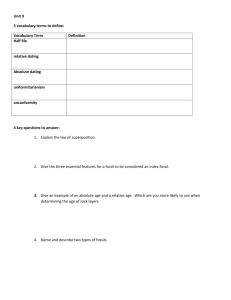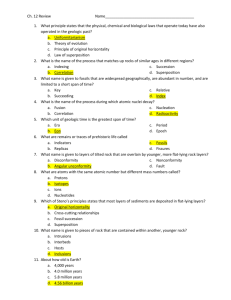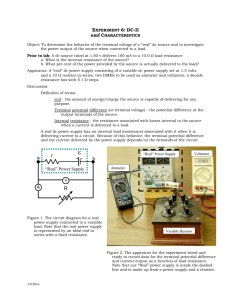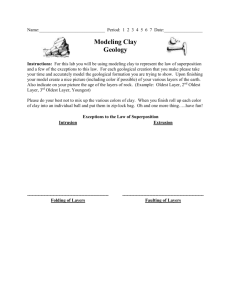E E 2315 Circuits I Lecture 4
advertisement
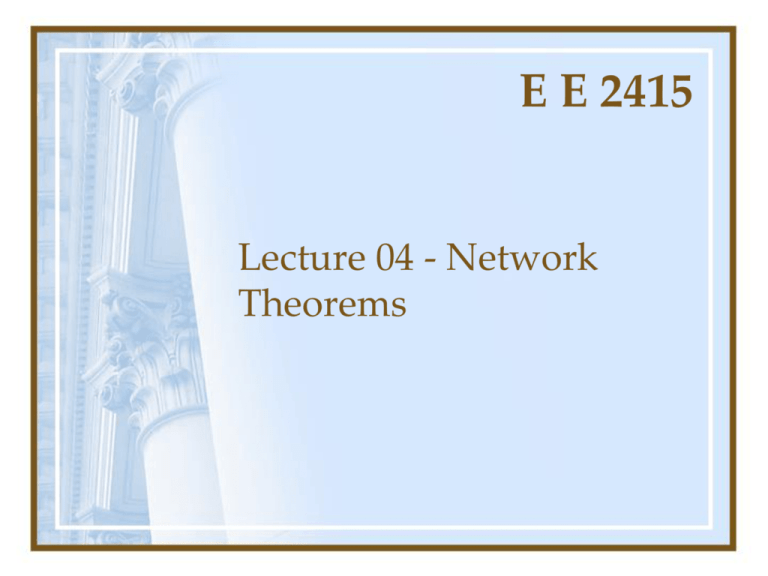
E E 2415 Lecture 04 - Network Theorems Maximum Power Transfer Theorem • Given a Thévenin equivalent circuit of a network, the maximum power that can be transferred to an external load resistor is obtained if the load resistor equals the Thévenin resistance of the network. Any load resistor smaller or larger than the Thévenin resistance will receive less power. Maximum Power Demonstrated (1/2) RTh VTh a I RL b and PL I RL RL 2 PL V PL is max if dPL 0 dRL VTh I RTh RL 2 Th RTh RL 2 R R dPL 2 VTh 4 dRL RTh RL 2 Th 2 L Maximum Power Demonstrated (2/2) RTh dPL 0 RL RTh a dRL VTh I RL b and PLmax 2 Th V 4 RTh • Maximum Power Transfer Theorem applied when matching loads to output resistances of amplifiers • Efficiency is 50% at maximum power transfer Max Power Plot Vth = 100 V Rth = 10 W Superposition Theorem (1/2) • In a linear system, the linear responses of linear independent sources can be combined in a linear manner. • This allows us to solve circuits with one independent source at a time and then combine the solutions. – If an independent voltage source is not present it is replaced by a short circuit. – If an independent current source is not present it is replaced by an open circuit. Superposition Theorem (2/2) • If dependent sources exist, they must remain in the circuit for each solution. • Nonlinear responses such as power cannot be found directly by superposition • Only voltages and currents can be found by superposition Superposition Example 1 (1/4) 20 W 10 V a I1 5W I2 5A b Find I1, I2 and Vab by superposition Superposition Example 1 (2/4) Step 1: Omit current source. 20 W 10 V a I11 5W I21 b 5A By Ohm’s law and the I11 I 21 0.4 A voltage divider rule: Vab1 2.0V Superposition Example 1 (3/4) Step 2: Omit voltage source. 20 W a I12 5W I22 b By the current divider rule and Ohm’s law : 5A I12 1.0 A I 22 4.0 A Vab 2 20V Superposition Example 1 (4/4) 20 W 10 V a I1 5W I2 5A b Combining steps 1 & 2, we get: I1 I11 I12 0.6 A I 2 I 21 I 22 4.4 A Vab Vab1 Vab 2 22V Superposition Example 2 (1/5) 16 W 16 A 6W Ix 64 V 16 A Find Ix by superposition 10 W Superposition Example 2 (2/5) 16 W 16 A 6W Ixa 16 A 10 W Activate only the 16 A Current source at the left. Then use Current Divider Rule: 10W 16W I xa 16 A 13 A 6W 10W 16W Superposition Example 2 (3/5) 16 W 16 A 6W Ixb 16 A 10 W Activate only the 16 A Current source at the right. Then use Current Divider Rule: 10W I xb 16 A 5 A 6W 10W 16W Superposition Example 2 (4/5) 16 W 16 A 6W Ixc 64 V 16 A 10 W Activate only the 64 V voltage source at the bottom. Then use Ohm’s Law: 64V I xc 2 A 6W 10W 16W Superposition Example 2 (5/5) 16 W 16 A 6W Ix 64 V 16 A 10 W Sum the partial currents due to each of the sources: I x I xa I xb I xc 13 A 5 A 2 A 6 A Superposition Example 3 (1/4) 4W 12 V a ix 2W 1.5ix 30 V b • Solve for Vab by Superposition method • Dependent source must remain in circuit for both steps Superposition Example 3 (2/4) 4W ix a 2W 1.5ix 30 V b Vab1 Vab1 Vab1 30 ix 0 1.5ix 4 4 2 1 40 1 1 9 15 Vab1 1.5 Vab1 Vab1 V 3 4 2 8 4 Superposition Example 3 (3/4) 4W 12 V a ix 2W 1.5ix b 12 Vab 2 Vab 2 Vab 2 12 ix 0 1.5ix 4 2 4 20 1 1.5 1 9 7.5 Vab 2 Vab 2 Vab 2 3 2 4 4 8 Superposition Example 3 (4/4) 4W 12 V a ix 2W 1.5ix b 30 V Vab Vab1 Vab 2 40 20 Combining the solutions: Vab V V 3 3 Vab 20V
